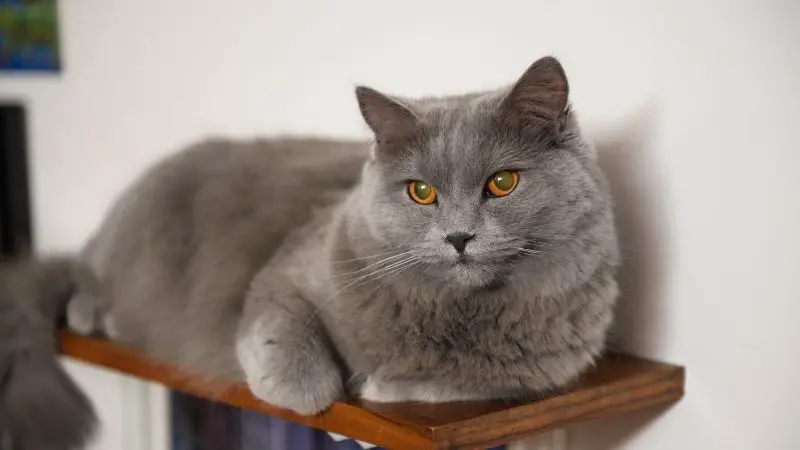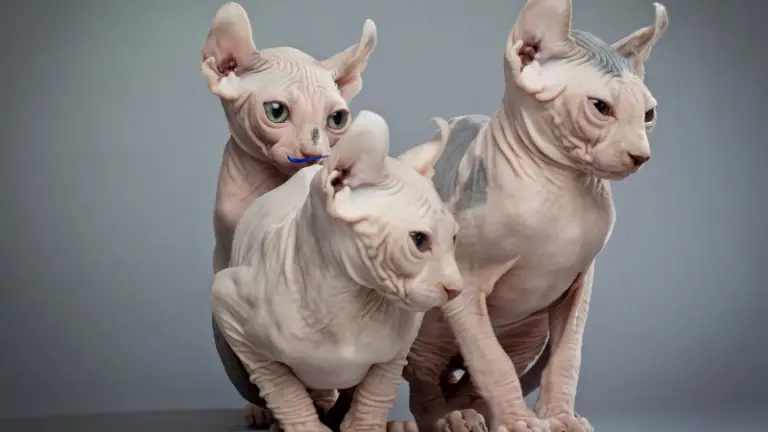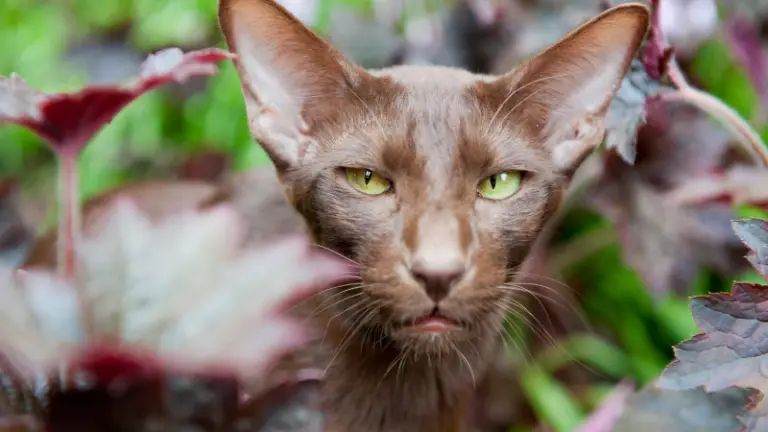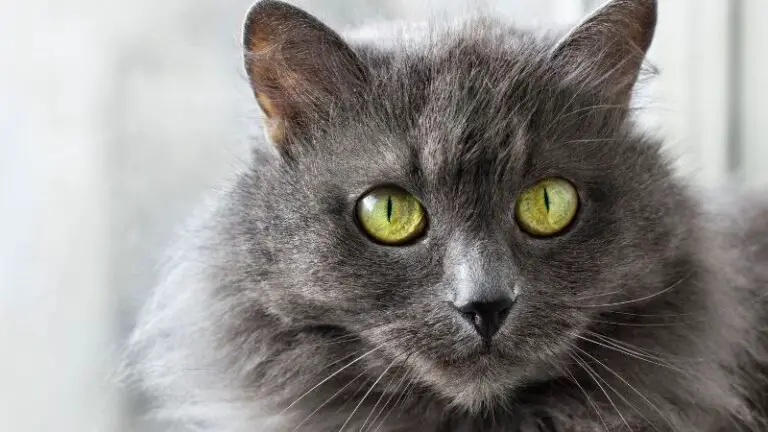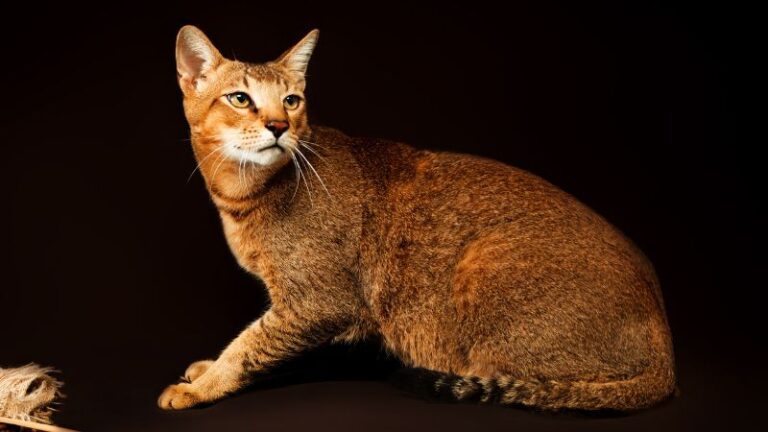CHARTREUX CAT PERSONALITY AND BREED (ALL YOU NEED TO KNOW)
Would you like to know more about the Chartreux cat personality? Although there are few examples of these splendid blue-haired cats, they are very friendly pets.
They represent the oldest European breed, partly characterized by its unmistakable coat color, of which there are no other variants. At a glance, this is a cat breed with real history, a unique coat, quiet and warbling at times. This cat can adapt quickly to various environments.
Let’s know more about the Chartreux cat personality and breed.
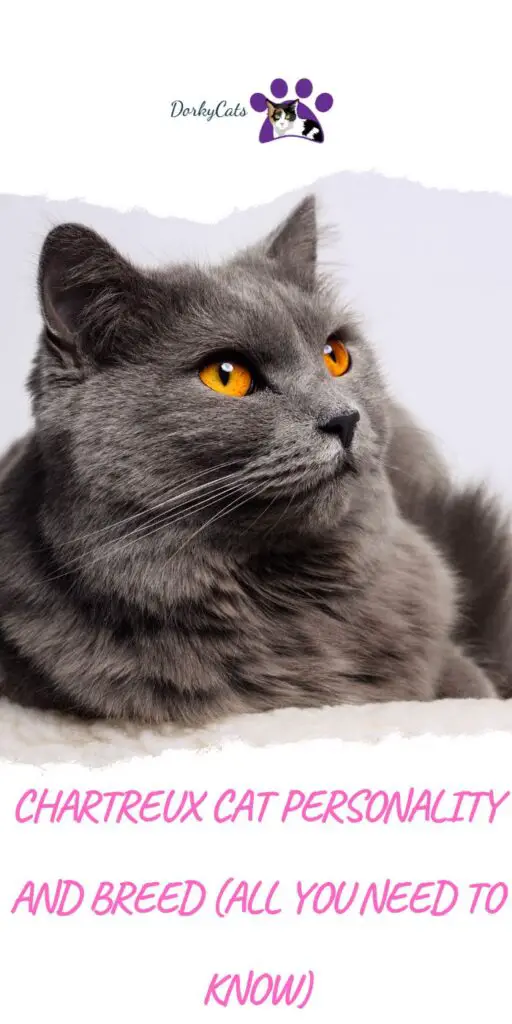
WHAT IS THE CHARTREUX CAT GENERAL ASPECT AND SIZE?
It is not really known if the Chartreux cats have lived with the monks for a long time. But this cat is a great admirer of the quiet life who does not disdain solitude and, even less, comfort.
The Chartreux cats have golden or copper eyes. It is a characteristic that is peculiar to this breed. In kittens and elderly cats, the color of the eyes appears less brilliant.
Chartreux cats assume the characteristic color of the eyes, leather or coppery orange,
towards the sixth month of age.
CHARACTERISTICS OF CHARTREUX CAT
| Characteristic | Description | Notes |
|---|---|---|
| In summary | A unique and ancient breed, today associated with France but still rare elsewhere | A native of Syria; their history dates back to the Middle Ages |
| Personality | Sensitive and calm, he is also faithful and affectionate | |
| Appearance | A breed defined by the particular blue coat with a woolly texture | He has a solid build. In males, the jaw is pronounced |
| In the house | It fits easily and is silent. Play for long periods and then suddenly fall asleep | |
| Behavior | Maintains a strong hunting instinct. He loves to eat and easily tends to obesity | Learn by observing (for example when you open a door) |
| Grooming | To keep the coat in excellent condition is enough to stroke it | Once his fur was prized |
| Most common health problems | There are no significant health problems | |
| Size | Medium-large, between 3 and 7.5 kg | |
| Ears | Of medium size, placed on the top of the head and with the tips spread apart | |
| Eyes | Large and with a slight upward crease | |
| Head | Large and well-developed skull, with a wide, straight nose and a small, narrow muzzle. | |
| Paws | Relatively short, strong, muscular, with round and small feet | |
| Coat | Of short or medium hair, with a velvety steak | |
| Allowed colors | All shades, from gray-blue light to dark |
The Chartreux cats have a thick tail at the base, which tends to thin out toward the end. The female cats have a more petite build; they do not develop a prominent jaw over the years.
The evident streaks on the coat of the kittens gradually fade until they disappear altogether in adulthood.
▷ The skull is trapezoidal, not rounded, which is a peculiarity of the Carthusian.
CHARACTERISTICS OF THE CAT
The coat is extraordinary, not only for the color. It has a unique woolly texture to the point that it seems to caress a sheep. In addition, it presents the so-called “breaks” on the chest, the points where the hair divides naturally: this largely depends on the presence of a thick undercoat.
The top layer is waterproof; you have to stroke it to keep it in excellent condition. The Certosino reaches important dimensions and reaches full growth in the first two years of life (especially the males).
It is typically an agile cat and an infallible hunter.
WHAT IS THE HISTORY OF THE CHARTREUX CAT?
The name and history of the Carthusian are inextricably linked to the French monastery of Grande Chartreuse, located north of Grenoble.
It seems that his ancestors were cats that lived in the mountains of Syria, then brought to France in the 13th century by the returning knights from the Crusades.
That many of these cats joined the order of Carthusian monks perhaps helps to explain why the cats came to the monastery.
It is a very ancient breed: the first reference to a “blue cat” dates back to the 17th century in the writings of the French naturalist Buffon. At the end of the Second World War, the breed was saved from extinction and then exposed for the first time in the United States in 1971.
WHAT IS THE ORIGIN OF THE CHARTREUX CAT?
As a natural breed, the Chartreux has very ancient origins, even if not easily traceable.
The more likely hypothesis would suggest that this cat could even come from the mountainous regions north of Syria and that following the commercial relations between
The Middle East and the Mediterranean countries have arrived on the Old Continent.
In fact, it seems that in the Middle Ages, a tiny feline similar to the Chartreux was already known as the cat of Malta or Cyprus.
The actual breeding of these cats started around 1930—a work begun by the sisters Léger.
As has happened to other breeds, with the Second World War, these cats risked extinction, and to avert the danger; the Chartreux cat survivors were made to cross with the British Blue shorthair.
Despite the similarities, those two breeds are different.
AN ADVICE
Chartreux and British Shorthair look alike, but to distinguish them, it is enough to observe the nose: if it is broad with a defined stop, but not as in the exotic breeds, then it’s a British Shorthair.
If, on the other hand, the blue cat has a straight nose, it’s a Chartreux.
CHARTREUX CAT PERSONALITY

The Chartreux is definitely a peaceful cat. He is a comfort lover, discreet and friendly with humans and other animals. These characteristics, however, must not suggest that it is a chubby cat.
He doesn’t like to be held too much in the arms, and the noises annoy him. In addition, if a prey comes within range, it reveals a hunting disposition worthy of a wild cat.
▷ Under a seraphic nature, the Carthusian hides exceptional qualities of a predator.
The extreme vivacity of the kittens tends to subside with adulthood. A discreet and quiet, the Chartreux is a great lover of home life.
THE “CAT-DOG”
It is with this curious pseudonym that the Chartreux cat is sometimes referred to. The nickname alludes to the great attachment that the specimens of this breed have towards the master.
If you have one, don’t be surprised if you find it behind the door when you return home.
HOW TO CARE FOR AND FEED THE CHARTREUX CAT
His thick coat needs only brushing once a week with one soft brush and a rubber glove during the moulting period to remove dead hair.
The Chartreux’s ideal diet must provide balanced meals of meat, rice, and vegetables. However, if you prefer fresh or packaged food, wet and dry, as long as they are the first choice, it is suitable for these cats.
The sturdy build and the big appetite are likely to make him fat; for this reason, you need to check the quantities.
The Chartreux presents a sexual dimorphism more pronounced than other races.
AN ADVICE
The Chartreux tends to suffer particularly from urinary tract problems. To avoid situations that are not reversible, it is a good idea to subject the cat to periodic veterinary checks.
FREQUENTLY ASKED QUESTIONS
What is the Chartreux cat lifespan?
The Chartreux cat can live up to 16 years. The lifespan of these cats can be prolonged with good quality food, proper care, and a proper environment.
What is the Chartreux cat’s price?
Chartreux cat’s price can range between a few hundred dollars and $ 2000. The price average price depends on the kitten’s age, the breeder, and the purity of the breed.
Are Chartreux cats friendly?
Chartreux cats are amiable; they bond deeply with their owner, so much so that they are called the “cat-dog” because they follow their human everywhere.
Are Chartreux cats rare?
Chartreux cats are considered part of a rare breed because they are challenging to be found. However, it is easier to find those cats in Europe than on other continents.
Is my cat a Russian Blue or a Chartreux?
There are a few differences between the Russian Blue and the Chartreux cats. For example, the Russian Blue has green eyes, while the Chartreux cats have golden eyes.
The Russian Blue has a double coat with a Blue-gray-black fur coat that results in a bluish color, while the Chartreux has a thick texture, Silver-gray fur, and a short double coat.
Can Chartreux cats meow?
Chartreux cats use chirps and thrills instead of mewing. It is a very silent cat, although it knows how to communicate with others, including humans.
Can Chartreux cats be left alone?
Chartreux cats can be left alone; of course, within reason, they are affectionate yet independent pets. Since he likes a calm environment, staying alone for a few hours is not a problem for him.
Do Chartreux cats shed a lot?
Chartreux cats do not shed a lot; you can expect a moderate amount of fur to be lost during the moulting periods.
Are Chartreux cats indoor cats?
Chartreux cats like to live indoors; they are peaceful calm cats that love a quiet environment. But they are also known to be good hunters if given a chance.
Are Chartreux cats hypoallergenic?
Chartreux cats are not hypoallergenic cats; therefore, if you need a cat breed with this characteristic, you must get another cat.
Are Chartreux Cats smart?
Chartreux cats are brilliant, as shown by their extraordinary hunting abilities. In addition, they are intelligent observers and can learn to do things just by observing how humans do things.

